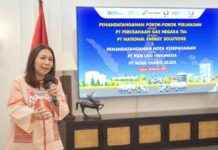National Economic Council Urges Digital Transformation for Accurate Social Assistance Distribution
In a recent address, Chairman of the National Economic Council, Luhut Binsar Pandjaitan, emphasized the crucial need for digitalization to enhance the efficiency of social assistance distribution. The call for optimization comes in response to the challenges faced by social protection programs, as highlighted by Pandjaitan himself during a discussion in Jakarta.
Challenges in Social Assistance Distribution
Pandjaitan pointed out several key challenges hindering the effectiveness of social protection programs. These challenges include duplicate beneficiary data, individuals lacking identity numbers, and people failing to meet the required criteria to qualify for assistance. To address these issues, the government is currently working on the development of the National Integrated Socioeconomic Data (DTSEN) system. This system aims to consolidate data on welfare, socioeconomic status, and extreme poverty from three different databases.
Enhancing Data Quality and Distribution Effectiveness
One of the critical components of the DTSEN system is the integration of detailed information such as names, educational background, and employment status. By synchronizing data on beneficiaries across various social protection programs, including staple goods assistance and electricity subsidies, the government aims to improve the overall quality of data and enhance the effectiveness of distribution. This initiative is part of the Government Technology (GovTech) directive, instructed by President Prabowo Subianto to be completed by August.
Long-Term Solutions and Benefits
The implementation of digitalization in social assistance distribution is expected to yield long-term benefits. By ensuring transparent distribution without leakage or misappropriation, the system aims to optimize budget spending and allocate assistance funds more efficiently. This strategic approach not only enhances the welfare of communities but also has a positive impact on the national economy.
Looking Ahead: A Brighter Future for Social Assistance
As the government continues to prioritize digital transformation in social assistance distribution, there is a sense of optimism regarding the potential improvements in the welfare of the population. Through concrete measures and effective utilization of technology, the goal is to create a system that not only meets the immediate needs of beneficiaries but also contributes to sustainable economic growth.
With a focus on innovation and data-driven solutions, the path towards a more efficient and accurate social assistance distribution system is becoming clearer. By harnessing the power of digitalization, the government aims to deliver targeted support to those in need while ensuring accountability and transparency in the process.
As the journey towards a digitally optimized social assistance framework unfolds, the promise of a more equitable and prosperous society looms on the horizon. Through collaboration, innovation, and a steadfast commitment to leveraging technology for social good, the vision of an inclusive and efficient social assistance system is within reach.






















